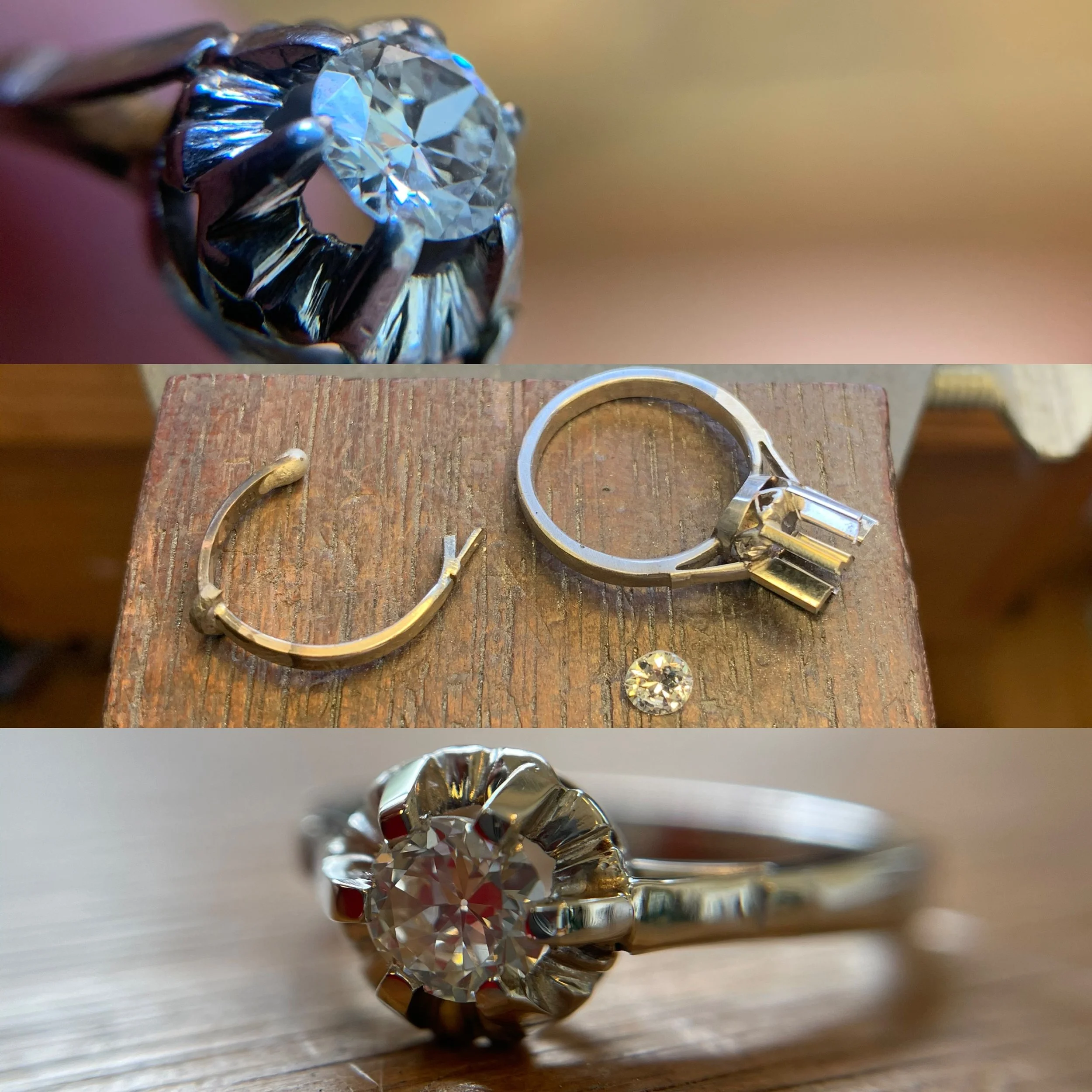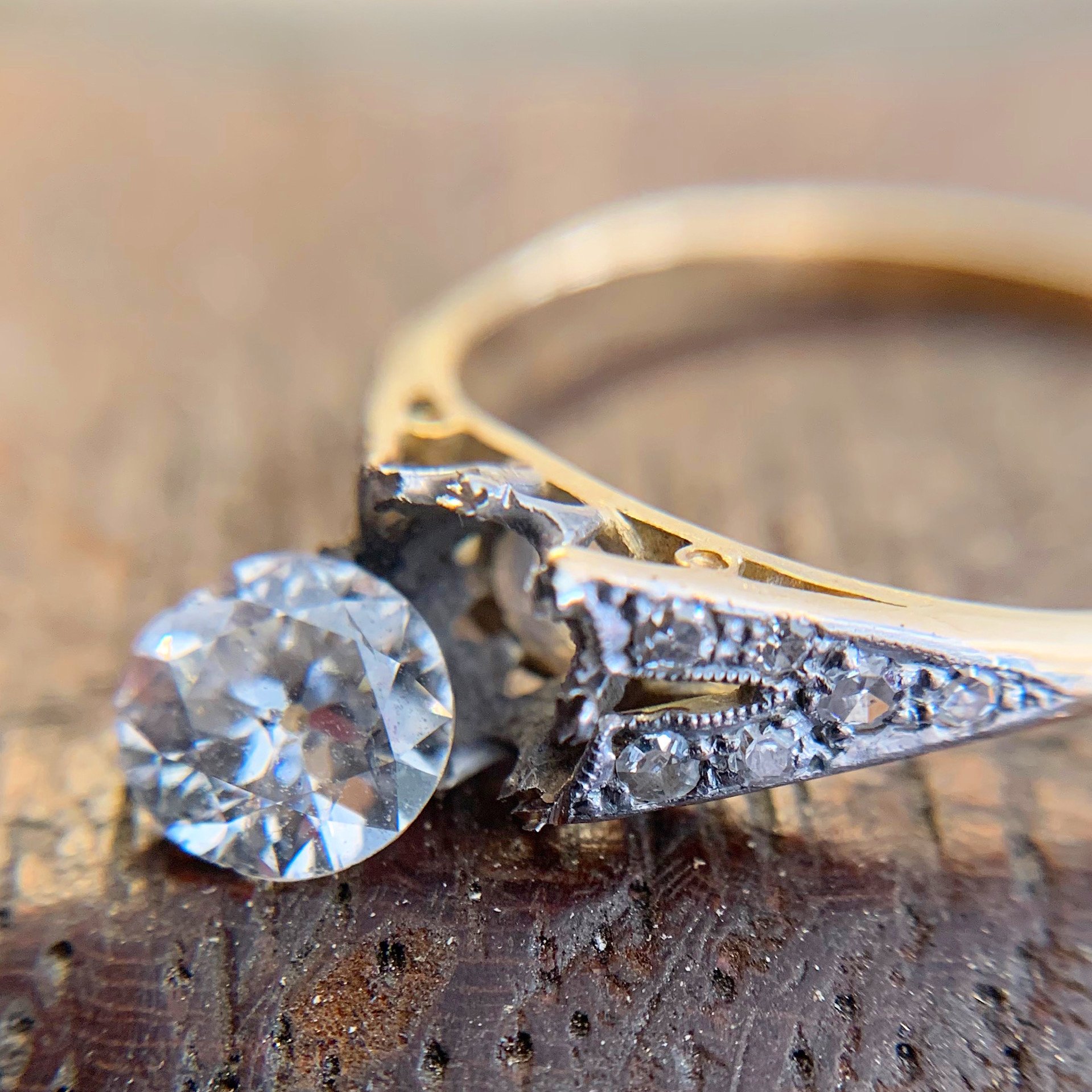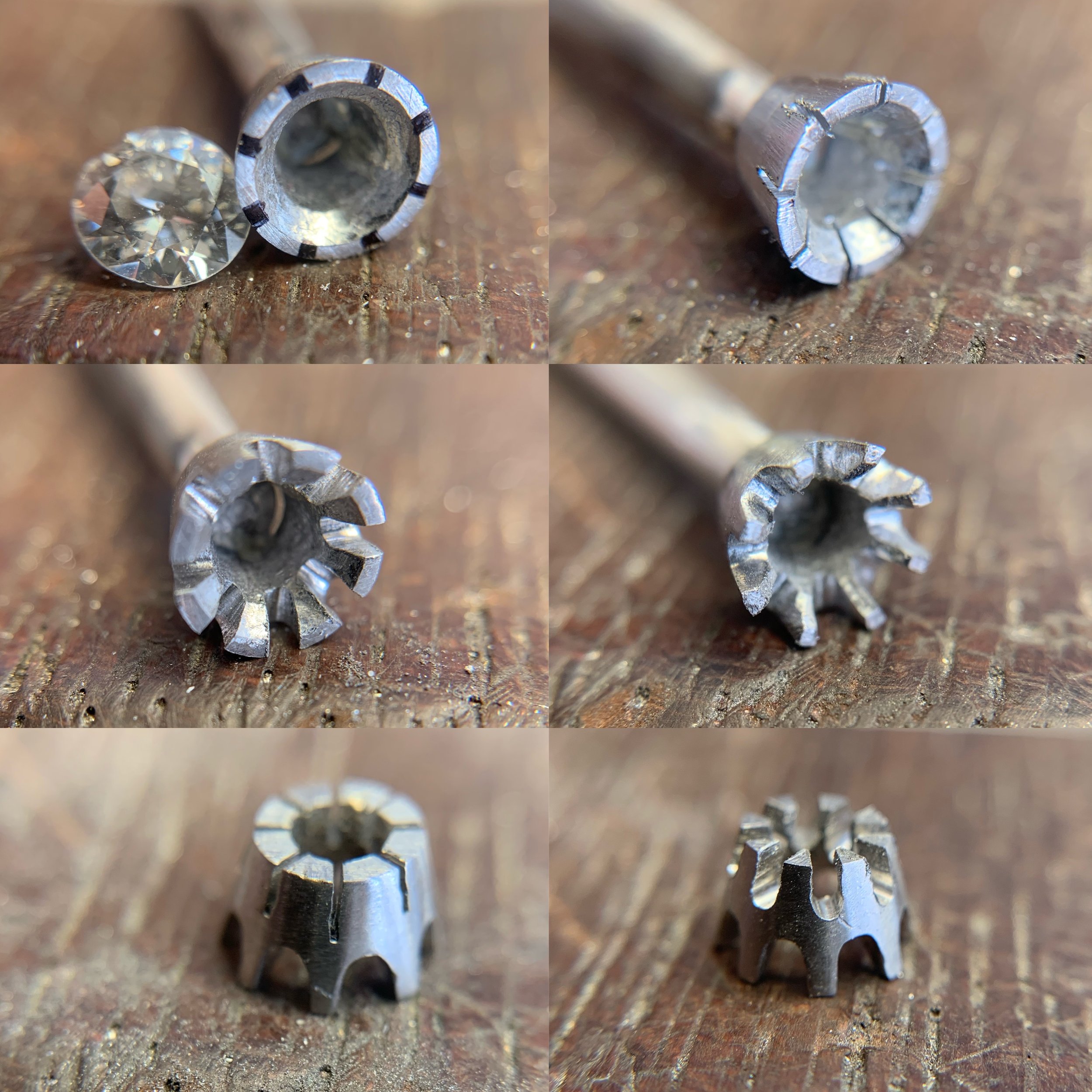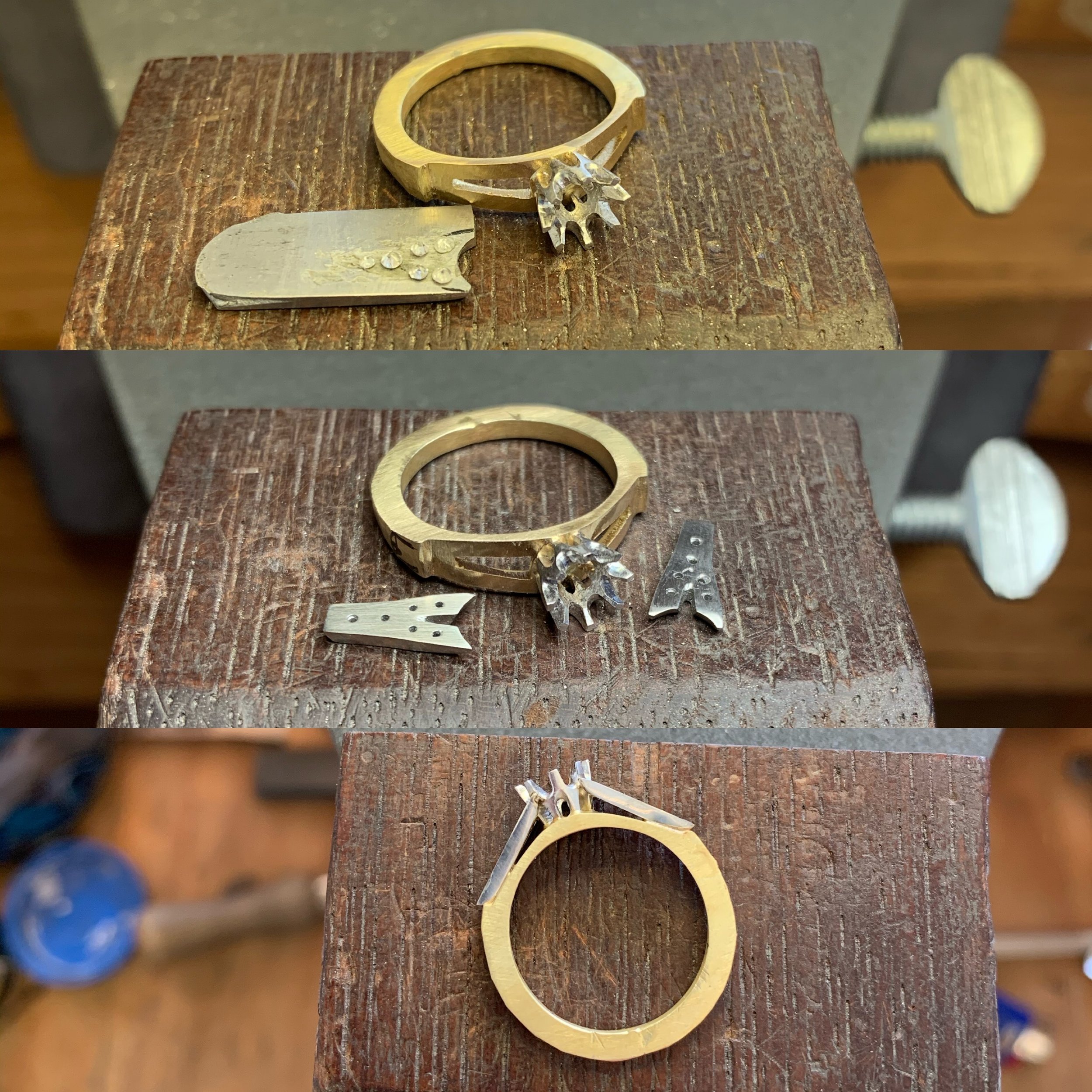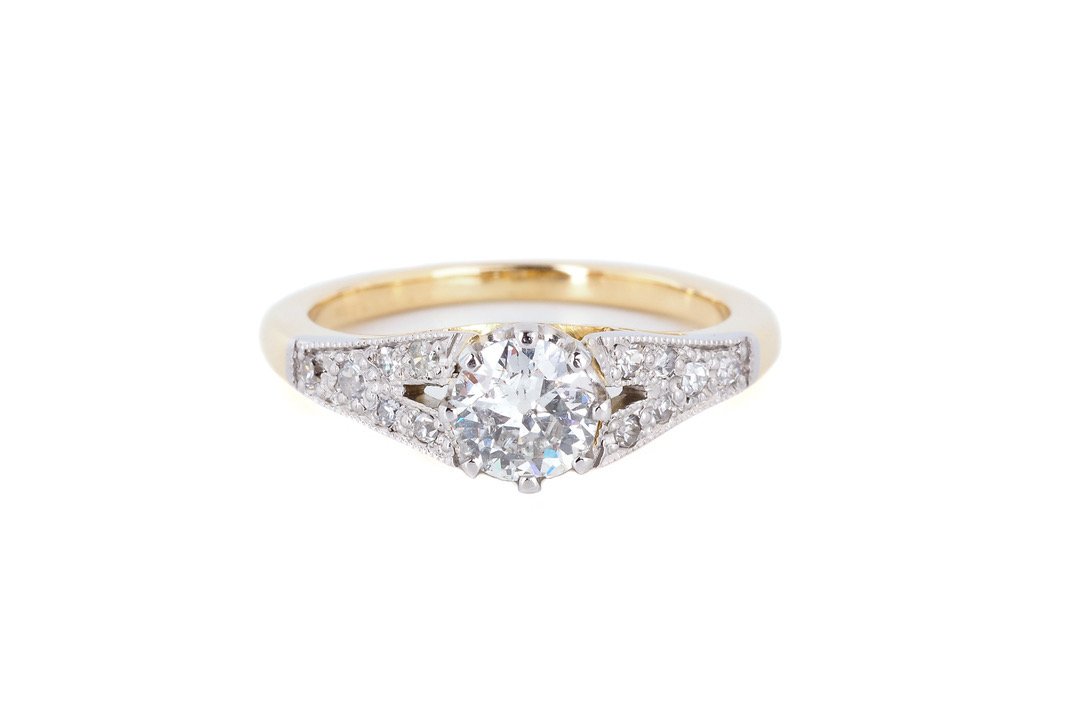5 Things To Be Aware Of With Vintage Or Antique Jewellery
It might not come as a surprise to you, but I’m an absolute lover of a good vintage or antique piece of jewellery. The history of jewellery is a layered and fascinating one, and while most pieces that are older than 150 years or so are predominantly found in museums, there are still many pieces from the Victorian (late 1800s), Art Deco (early 1900s) Modernist (post WW2) and contemporary eras which are available to buy and wear with delight today.
It’s quite common for people to choose a vintage or antique engagement ring, or to wear something which has been passed down as a family heirloom. To continue the story of a jewel with a new wearer is part of what makes jewellery so captivating.
In saying that, I’ve seen and repaired my fair share of ‘Nan’s’ rings and ‘Great-Granny’s’ cherished pieces to know that some things need a bit of attention to make them safe and wearable again.
While there are countless things that I’ve come across (I couldn’t possibly name them all), I’ve summarised the top 5 things I think you should at least be aware of when looking to buy a vintage piece, or to wear a recently received heirloom.
1. Old repairs, old joins, and ‘Frankenstein’ pieces
With jewellery that has been worn for some decades it may have already had a repair at some point, which can affect how much longevity is left, and how difficult it will be to do any further work on it. With rings, there may have already been one or more resize pieces put into the band which can make further resizing difficult. Over long periods of time, solder seams can become brittle and may need to be rejoined. I have also seen cases where rings have been compiled of two, three or even more separate components - kind of like a Frankenstein ring.
A badly damaged ‘Frankenstein’ platinum and white gold antique ring which had a new band and all new claws made to give it a new lease on life.
2. Old alloys
An alloy is the term given to the recipe of the metal (for example 9ct yellow, 18ct white gold, etc, you can read more about alloys here) White gold alloys in particular are incredibly varied in their recipes. Older white gold alloys generally contain high nickel content which a lot of people can be allergic to. Some of the low carat gold alloys (9ct yellow, 9ct rose) can vary in colour or have a light patina on the surface (an oxidisation which builds up over many years), so if you need to put a section in for a ring resize it can be difficult to match the colour perfectly. In general, 9ct yellow and rose golds can become brittle over many decades, making everyday wear a little more risky than the higher carat gold such as 18ct yellow or rose. Platinum is the most dense of the precious metals, so it withstands wear better than most other alloys. However it still requires attention occasionally, and is one of the most expensive types of metal for repair work, requiring a highly skilled jeweller.
3. Wear and Tear
Rings
The main areas to have checked in rings would be the band and the stone set areas. The bands can become very worn out and thinned with years of wear. In a lot of cases with very old rings they may even need to be re-shanked (which means a brand new band.) Stone settings are also subject to a lot of wear and tear. Claw settings often need to be either re-tipped or replaced depending on how worn out they are. Remember it’s the claws that hold the gems in place so it’s imperative they are strong! Other types of settings such a bezels, grain set, channel set etc, can also wear down, so it’s just as important to have these assessed and repaired if needed.
Chains & Bracelets
The links on chains and bracelets can wear down over a long period of time, particularly in areas around the clasp section. Sometimes the links around these areas have been built up with solder as a past repair which is a sign that there has already been considerable wear. The clasps can also require replacing as they contain small steel springs which have a limited life span. Pendants can show wear around the bail area, which is the part that hangs it from the chain. In general, once a chain shows considerable wear on the links, or repetitively breaks, it’s time for a new chain.
4. Synthetic Gems
Very early 20th century pieces and other antique pieces were often set with closed back settings. Some of these stones may have silver or coloured foil at the back of them to make them more reflective. Sometimes they have been set with paste gems which are coloured glass or powdered gem material set into a stone shaped mould. Other types of synthetic gems that were used are crystals (cut lead glass), or early plastics such as Bakelite and Vulcanite. In these eras it was not uncommon to have these types of synthetic gems set into precious metals such as gold and silver, whereas nowadays they are really only reserved for costume jewellery. This is all perfectly fine and adds to the charm and the period of the pieces, but it’s important to know that a lot of these pieces can not be repaired very easily without removing or replacing all of the synthetic gems.
5. Antique jewellery wasn’t made for our modern lifestyles!
It’s really on trend at the moment to have a very minimal and fine design, particularly with rings. A lot of antique, Art Deco and post war rings were made with this aesthetic, often having very fine bands and very fine gem settings. There are many reasons for this, one of them being to minimise the precious metal use because of its high value. But the main reason to bear in mind, was that it was not expected that rings were to be worn on a daily basis, particularly inside the home. Nowadays we tend to want to wear our rings all day everyday, including when we are doing domestic chores or working in environments that are labour intensive. Precious pieces from decades or a century ago were just not made with this type of wear in mind (notwithstanding the gender stereotypes that have significantly shifted since then - thankfully!) Furthermore the types of women that were able to wear these precious and highly valuable gem set rings a century ago were often wealthy enough to have domestic help. The wear and tear of a ring when needle-working and flower arranging compared with landscape gardening or bartending bears no comparison.
Final thoughts
If you have been lucky enough to receive an heirloom or a vintage piece that you’re keen to wear, it’s highly recommended that you speak to a jeweller to find out whether there are any repairs that need to be done immediately, or in the near future. It’s only going to help you and your precious piece in the long run. A good jeweller looking at a well made piece of jewellery history will always advise what’s best for the piece, it’s in our best interest to preserve what we can from the history of our trade. But it’s also important to know that sometimes a piece has no more life left in it and it may be beyond repair. Either way, speaking to a jeweller will help you figure it out, hopefully before losing a precious stone or wearing it beyond repair.
A much loved family heirloom diamond, gold and platinum ring gets a complete remake, honouring the exact original design.
Originally posted August 31, 2021
